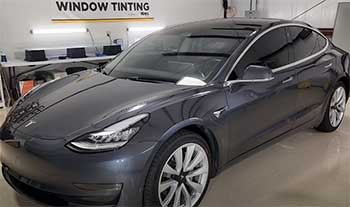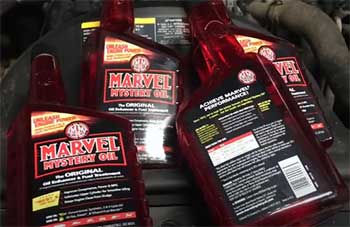As the need for superior car window tinting grows, manufacturers continuously innovate to provide more efficient, durable, and high-performing products. Among the forefront of these are XPEL’s XR Plus and XR Black window films.
So, let’s delves into these two contenders, offering an in-depth comparison between the XPEL XR Plus and XR Black.
A Brief Comparison Table
| Feature | XPEL XR Plus | XPEL XR Black |
|---|---|---|
| Infrared Heat Rejection | Superior | Good |
| UV Protection | Blocks 99% | Blocks 99% |
| Clarity | Excellent | Good |
| Color Stability | Excellent | Excellent |
| Aesthetic Appeal | Standard | High (Dark Black Hue) |
| Price | High | Medium |
XPEL XR Plus: The Pros

XPEL XR Plus is a ceramic film technology that gives top-tier heat rejection performance without sacrificing clarity, making it a go-to option for drivers aiming for maximum heat protection.
A significant advantage of the XR Plus is its unparalleled UV ray protection.
The film is capable of blocking out 99% of harmful UV rays, protecting the car’s interiors and passengers from the damaging effects of the sun.
Thus, if you’re wondering, “Does XPEL XR Plus block UV rays?” the answer is a resounding yes!
The XR Plus also boasts an impressive level of infrared heat rejection, keeping your car cooler even on the hottest days.
Its superior clarity ensures that it does not obstruct your view while driving.
Contrary to some rumors, the XPEL XR Plus does not have a blue hue. Its color stability guarantees a consistent and appealing look that enhances your vehicle’s aesthetics rather than detracting from them.
XPEL XR Plus: The Cons
Despite its advantages, the XR Plus isn’t without its shortcomings. For starters, it is on the pricier side of window tint options, which could be a drawback for budget-conscious buyers.
Additionally, while it offers a high level of heat rejection, it might not perform as well as other brands, such as Formula One Stratos, under extreme conditions.
XPEL XR Black: The Pros
On the other side of the spectrum is XPEL’s XR Black. A popular choice among consumers, this nano-ceramic window film offers a sophisticated look while providing excellent heat rejection.
What makes the XR Black stand out is its color. The rich black hue gives the vehicle a sleek, classic aesthetic appeal while providing privacy. Moreover, it comes with the same level of UV protection as the XR Plus, blocking out 99% of harmful UV rays.
Like the XR Plus, the XR Black also guarantees impressive color stability, ensuring that it does not fade over time.
XPEL XR Black: The Cons
While the XR Black offers excellent heat rejection, it does not match the level offered by the XR Plus. It is also slightly less clear than the XR Plus, which could be a point of concern for some drivers.
Key Differences Between XPEL XR Plus and XR Black
While XPEL XR Plus and XR Black are both high-performing, top-of-the-line products, they do have significant differences that distinguish one from the other. Let’s delve deeper into these key differences.
- Infrared Heat Rejection

In terms of heat rejection, XR Plus takes the lead.
While both films offer impressive heat rejection capabilities, the XR Plus outperforms the XR Black.
This makes the XR Plus a better option for those looking for maximum heat protection.
If you often park or drive in sunny, hot locations, the higher infrared heat rejection rate of the XR Plus would be a significant advantage.
- Clarity
In the battle of clarity, XR Plus once again triumphs over XR Black. The XR Plus is designed to provide maximum clarity, ensuring an unobstructed view.
The XR Black, while not poor in this respect, is slightly less clear. If clear visibility is your priority, the XR Plus would be a better choice.
- Aesthetic Appeal
When it comes to aesthetics, XR Black has the upper hand. Its rich black hue gives your vehicle a classic, sleek, and sophisticated look. If you’re after the aesthetic appeal and a certain level of privacy, the XR Black’s darker shade might appeal more to you.
- Price
The XR Plus tends to be more expensive than the XR Black due to its superior heat rejection and clarity. Budget-conscious customers may lean towards the XR Black as it still offers excellent performance at a more affordable price.
These are the key differences between XPEL’s XR Plus and XR Black. Your choice between the two will largely depend on your personal preferences and specific needs.
When choosing between the XPEL XR Plus and XR Black, your decision should rest on your priorities. If heat rejection is your main concern, then the XR Plus might be the better choice.
On the other hand, if aesthetics and privacy are your main concerns, then the XR Black would be more suitable.
Also Read: Comparison of SunTek And XPEL Window Tint.
Frequently Asked Questions (FAQ)
Absolutely. The XPEL XR Plus offers top-tier UV protection, blocking 99% of harmful UV rays.
No, the XPEL XR Plus does not have a blue hue. It offers superior color stability that ensures a consistent and appealing look.
This is subjective and depends on individual preferences and needs. While both offer excellent heat rejection and UV protection, the Formula One Stratos is known for performing exceptionally well in extreme conditions. On the other hand, the XPEL Prime XR Plus offers superior clarity.
Both XPEL and LLumar offer high-quality window films that provide excellent UV protection and heat rejection. However, XPEL films, particularly the XR Plus and XR Black, are known for their superior clarity and color stability.
Wrapping Up
In conclusion, the choice between XPEL XR Plus and XR Black boils down to personal preference and individual needs. Both offer excellent UV protection and heat rejection, but they differ in aesthetics and performance under different conditions.
Your decision should therefore align with what you value most in a window film.

